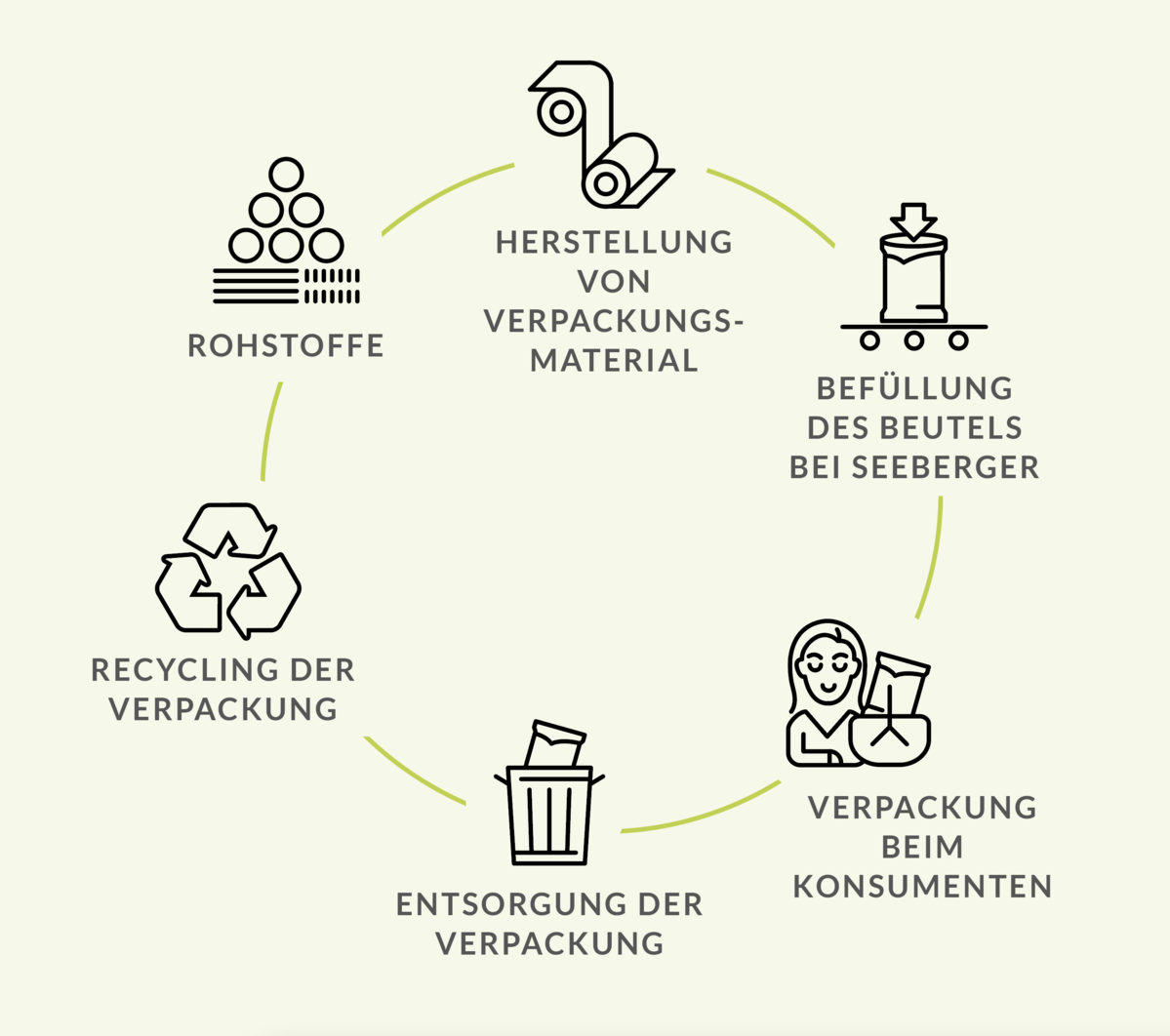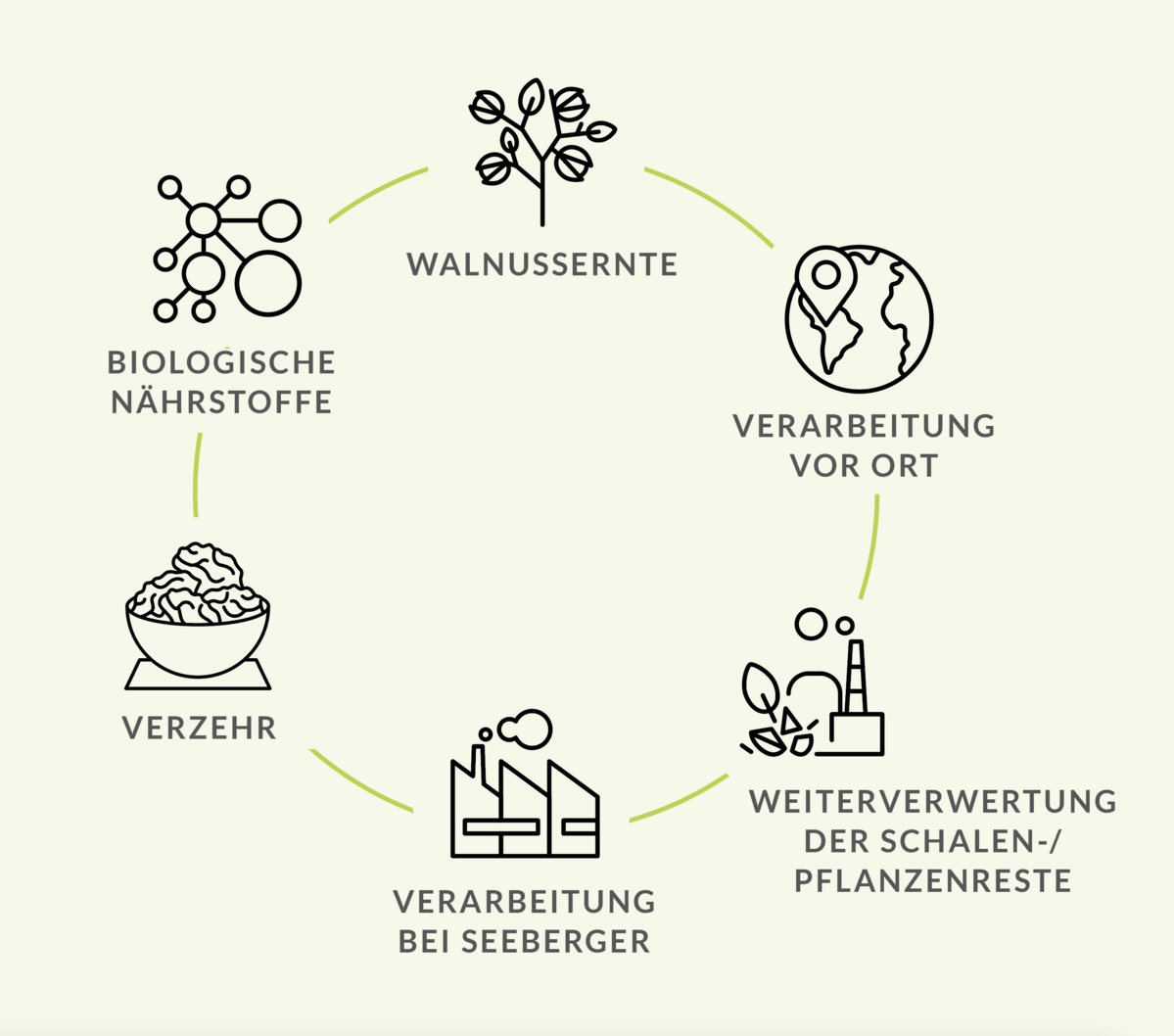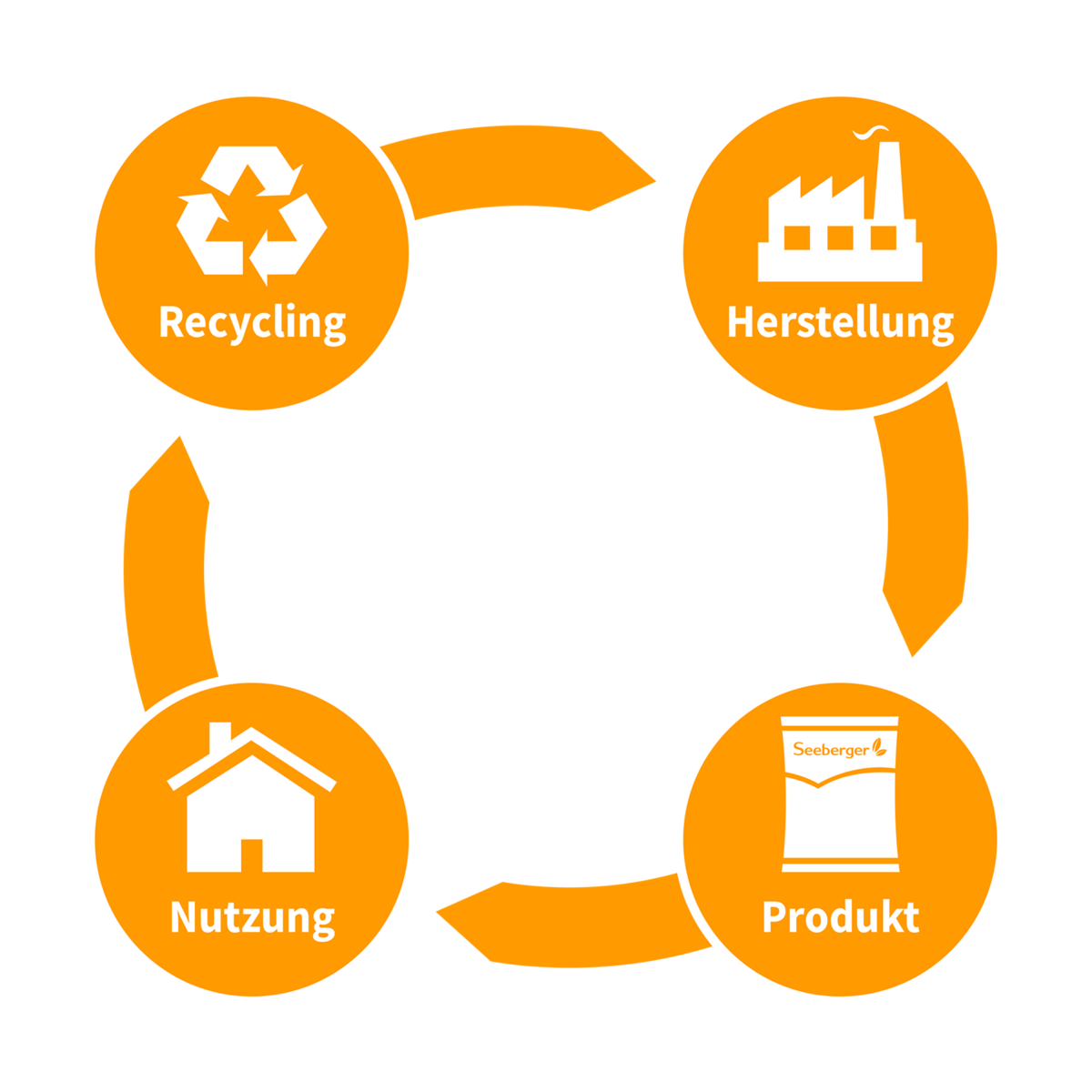In the perfect circular economy, no waste is produced. Products are manufactured in such a way that they can be turned into new raw materials and products again without any loss of quality. The circular economy conserves resources, reduces climate-damaging greenhouse gases and could solve the global waste problem.
We have been reducing packaging material since 2019 and are gradually using recyclable monocomposite material for our product packaging. Now we are taking the next step and moving further towards our vision of closing loops.
Since mid-September, three out of a total of ten defined products in the nuts & fruit segment have been supplied in films with a 30% recycled content (from mass balance). The remaining seven products will follow by the end of 2022. A matching logo on the back of the packaging makes this clear.

The circular economy process works in two systems – the recycling of primary packaging belongs in the technical cycle:
TECHNICAL CYCLE
Consumer goods are broken down into technical nutrients after their function has expired, thus enabling the production of new consumer goods.

Our high-quality natural products must reach our customers safely and in the best quality. To achieve this, their packaging must be outstanding. This also increasingly applies to their sustainability. On the way to sustainable packaging, the principle of the circular economy is our role model. Our aim is to ensure that our packaging can be recycled and reused as recyclate wherever possible.
BIOLOGICAL CYCLE
Here, the raw materials used for consumer products are decomposed into biological nutrients after use. For example, they promote the plant growth of renewable raw materials for new products.

Food, like our natural products, is already part of the biological cycle from its production, through its utilization to its decomposition.
We are delighted with this development and know that we still have a long way to go! This is because the technologies for the chemical processing of primary packaging are still very new, the processing is very complex and the investments are therefore high. Nevertheless, and precisely for this reason, we want to improve the supply situation on the market through demand and the use of recycled materials.
Composite films consist of several layers. With mono-laminates, all layers are always made of the same material. This enables more efficient recycling because it can be better separated.
In a perfectly functioning circular economy, the secondary raw material obtained in this way can be reprocessed into new plastic products in the form of recyclates.
In the perfect circular economy, no waste is produced. It is a model in which existing materials and products are reused for as long as possible without any loss of quality. Material cycles are to be closed by making waste available again (to the economy) as a secondary raw material. The aim is to generate less or no waste, conserve resources and reduce climate-damaging greenhouse gases. It could solve the global waste problem.

“Cradle to cradle” describes a model of a continuous circular economy. The idea is to think in terms of closed product cycles right from the start. This means that products are designed in such a way that they can be reused in another form or composted in a continuous cycle in order to save resources.
Recyclates are recycled materials. In the case of plastic packaging, recyclates are recycled plastic. This means that plastic waste in the sense of previously used plastics is recycled and reused as secondary raw materials for new products. This closes the recycling loop.
Mass balance is a process in which both recycled and virgin fossil materials are mixed in the production process.
The process works in the same way as green electricity: both conventional and green electricity flow into the electricity network, so that ultimately you don’t know whether conventional or green electricity is flowing out of the socket. However, individuals and/or companies that specifically purchase green electricity create demand on the market. The aim is for more and more existing conventional systems to be replaced by systems for the production of green electricity.
The mass balance method also works according to this principle. As the end result has exactly the same properties as pure fossil plastic, it is impossible to tell whether the product you are holding in your hands is made from fossil or recycled material. The material with recycled content may therefore not be used exactly in the Seeberger packaging, but the corresponding quantity was produced by film manufacturers and is used – perhaps in our products.
Secondary raw materials are raw materials recovered through recycling that can be used to manufacture new products, see recyclate. New raw materials are obtained from waste through processing in line with the circular economy. Secondary raw materials include plastics, paper and glass.
